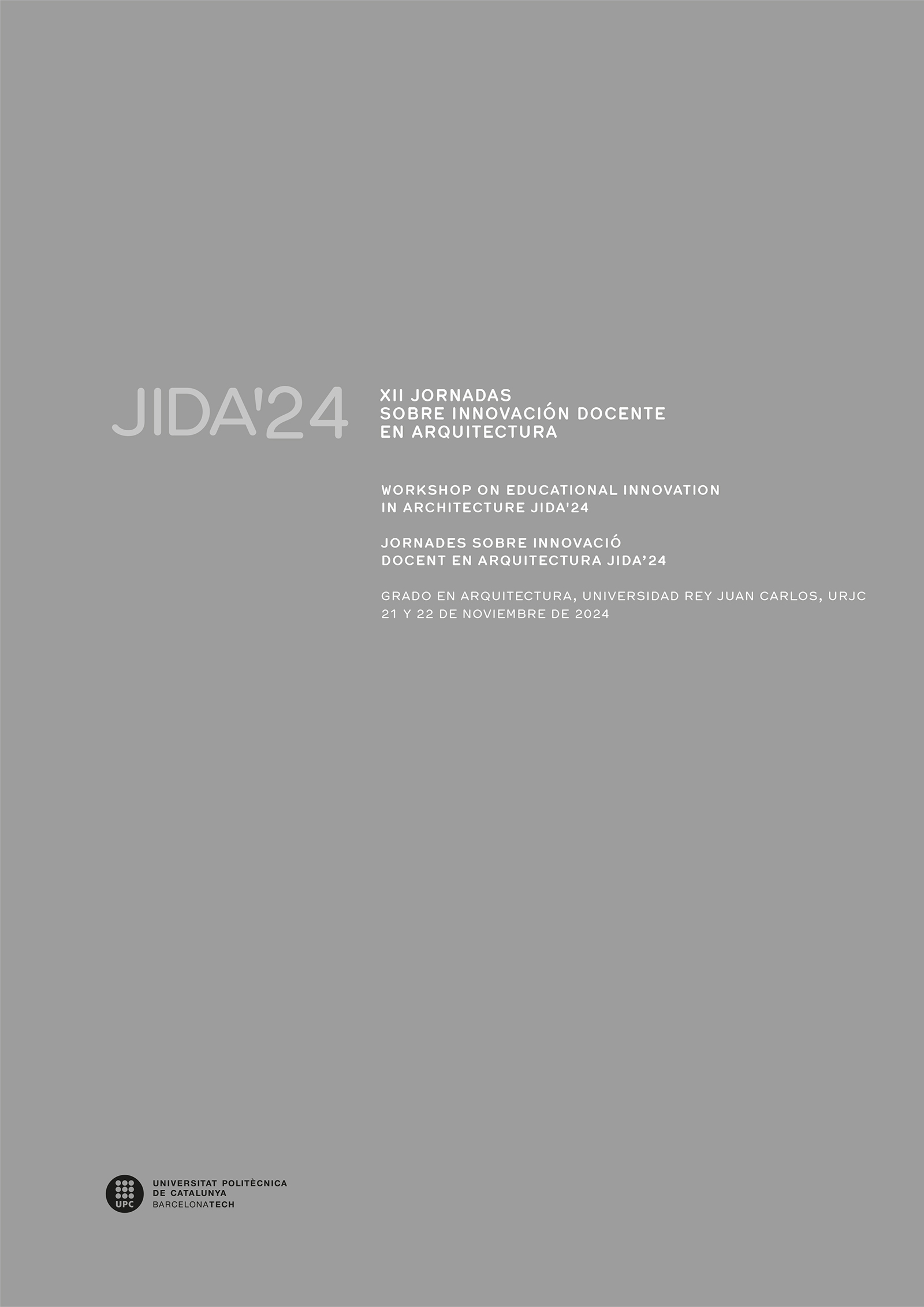Projective cartographies as a tool to rethink operational landscapes
DOI:
https://doi.org/10.5821/jida.2024.13316Keywords:
landscape planning, operational landscapes, projective cartographies, territory, landscape urbanismAbstract
In the historical context we live in, where urbanization is a process that affects the entire territory and not only urban areas, and where natural resources are increasingly limited, but a critical reflection on operational landscapes is necessary from a perspective that considers both the natural and social environments. Contrary to the traditional approach that assumes an understanding of the landscape as something opposed to city-building, the theory of planetary urbanization asserts that infrastructures and productive territories have become part of the urban condition and therefore must be studied, planned, and designed. Thus, in this Landscape Planning course, the methodology established is based on projective cartography as a tool to rethink the territory, generating new perspectives and solutions to address contemporary challenges in land use and landscape management.
References
Bambó-Naya, R., Sancho-Mir, M., y Ezquerra, I. 2019. El mapa y el territorio. Cartografías prospectivas para una enseñanza flexible y transversal. JIDA’19. VII Jornadas sobre Innovación Docente en Arquitectura Madrid, ETSAM-UPM.
Corner, J. 1999. The agency of mapping: speculation, critique and invention . Cosgrove, D. (ed.) Mappings. Londres: Reakton.
Forman, R. T. 1999. Land mosaics: the ecology of landscapes and regions. Cambridge; New York: Cambridge University Press.
García García, M., y Borobio Sanchiz, M. 2012. El paisaje como medio para la planificación territorial. Ciudades, Monográfico sobre paisaje (15).
García, M. G. 2017. Hacia la metamorfósis sintética de la costa. Diseñando paisajes resilientes. Universidad Politécnica de Madrid. Escuela Superior de Arquitectura de Madrid. Tesis Doctoral., De la infraestructura al paisaje, 179-211.
Katsikis, N., y Brenner, N. 2013. Is the Mediterranean urban? Implosions/Explosions: Towards a Study of Planetary Urbanization. Jovis, Ed.
Latasa-Zaballos, I., y Joseba Gainza-Barrencua. 2019. Arquitectura y paisaje: un entorno para el aprendizaje transversal, creativo y estratégico. JIDA’19. VII Jornadas sobre Innovación Docente en Arquitectura Madrid, ETSAM-UPM, 14-15 noviembre.
López-Sanchez, M., Linares-Gómez, M., y Tejedor-Cabrera, A. 2020. El arquitecto ante el nuevo paradigma del paisaje: implicaciones docentes. JIDA’20. VIII Jornadas sobre Innovación Docente en Arquitectura Málaga, eAM’-UMA, 12-13 noviembre.
Mcharg, I. (1992). Design with nature (Proyectar con la naturaleza). John Wiley & Sons, Inc. .
Mostafavi, M., y Doherty, G. ( 2016). Ecological Urbanism. Harvard University Graduate School of Design. Lars Müller Publishers, Zurich.
Oloriz, C. (2019). Landscape as Territory. Barcelona: Actar Publishers.
Oloriz, C., y Ramirez, A. (2023). Landsape Policies ‘by Design’. Journal of Delta Urbanism, Delft University of Technology.
Pozo, C. d. 2014. El paisaje como sistema dinámico: una inspiración para la ciudad contemporánea. Ciudad y territorio estudios territoriales. (XLVI (180)).
Rafael Córdoba Hernández, E. R. 2022. Metodologías activas en el urbanismo: de las aulas universitarias a la intervención urbana. JIDA’22. X Jornadas sobre Innovación Docente en Arquitectura Reus, EAR-URV, 17-18 noviembre.
Reed, C., y Nina-MarieLister. 2014. Ecology and Design: Parallel Genealogies: Ecological thinking remains a powerful lens for understanding complex adaptive systems. Places Journal.
Sordi, J. 2014. Beyond Urbanism. LISt Lab Laboratorio Internazionale, Trento.
Waldheim, C. 2016. Landscape as Urbanism. A General Theory. Princeton, New Jersey: Princeton University Press. Princeton and Oxford.






















